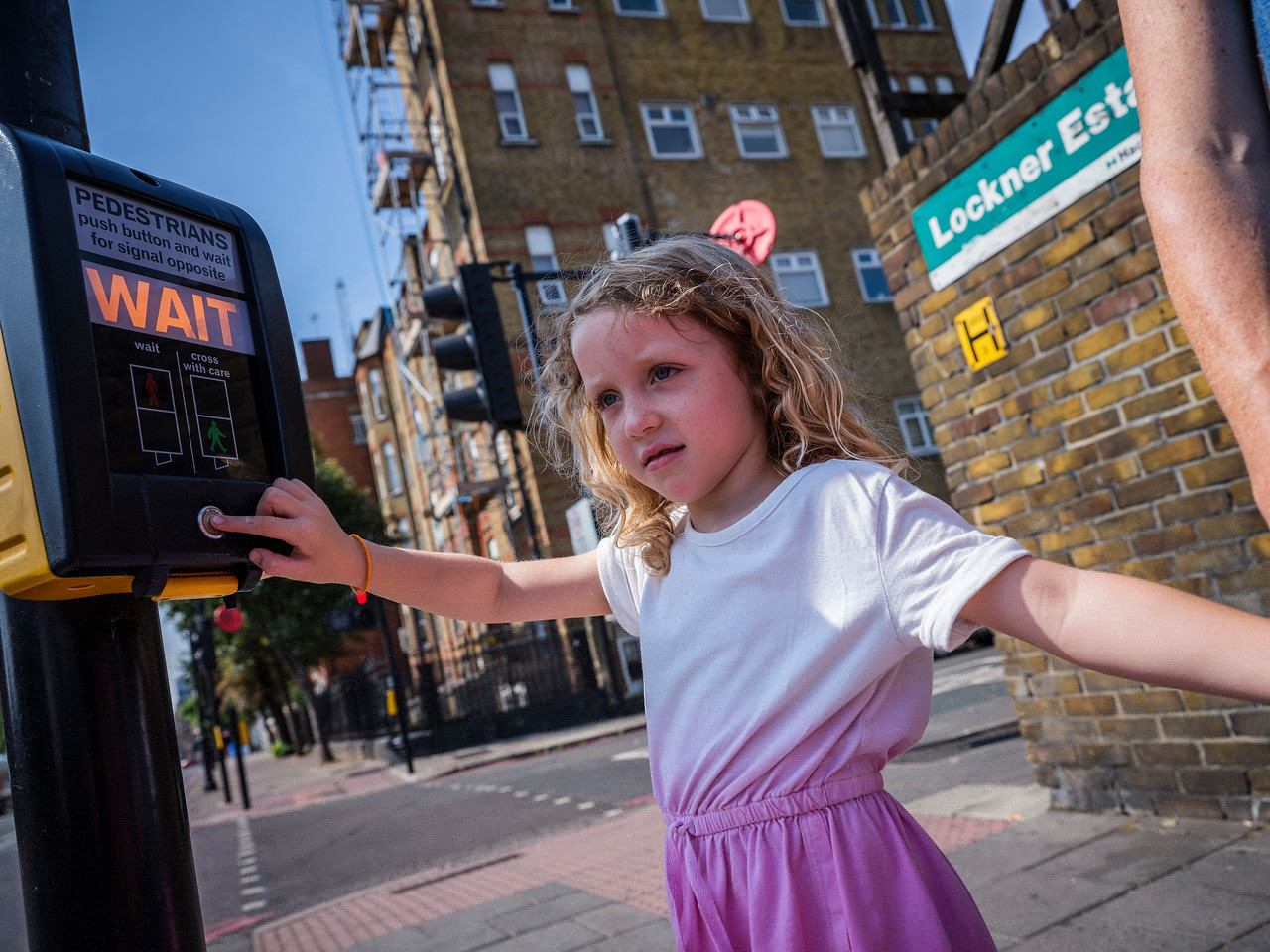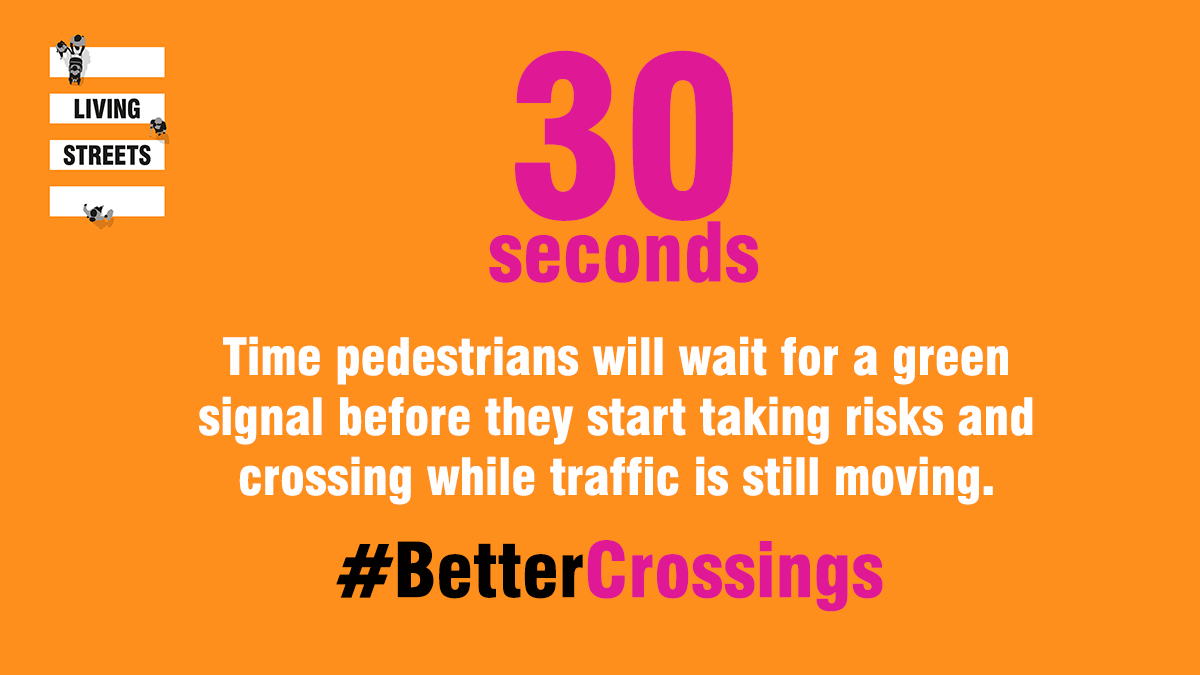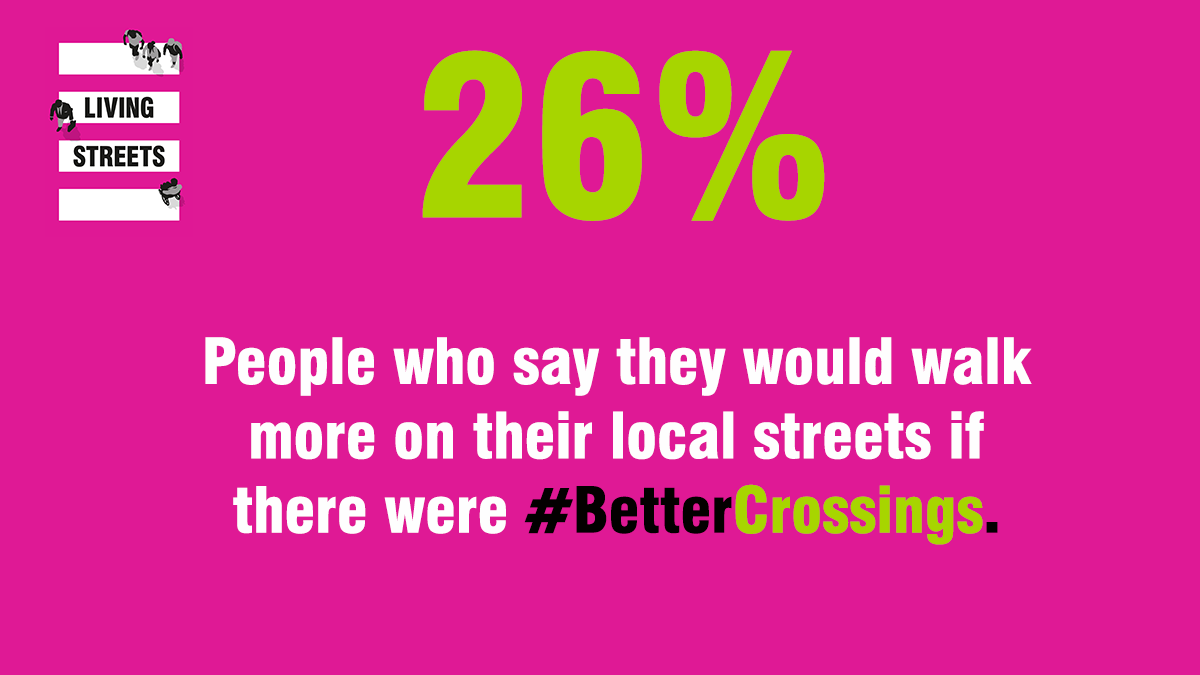Crossings
WHAT WE SAY
Everybody should be able to cross the road safely, directly and without delay.
Crossings should be positioned in the right place, give everyone enough time to cross, and should not make pedestrians wait too long for a green signal.

WHAT WE WANT
Less time to wait between green crossing signals.
Many crossings demand that pedestrians wait too long. By prioritising the flow of motor traffic, roads become inhospitable - creating a huge barrier to walking and wheeling. Sometimes people will seek to cross before the signals change, putting themselves and other road users at risk.
Wait times should prioritise pedestrians at junctions and crossings points. Anymore than 30 seconds and people are more likely to take risks when crossing the road.
More ‘clearance’ time to cross the road.
Timings on signalised crossings should be adjusted to reflect how quickly or slowly people walk. The Green Man lighting up is your invitation to cross the road. When the Green Man starts flashing, that’s the clearance time. Currently, the time the Green Man spends flashing is based on the assumption that people walk 1.2 metres per second – this was calculated in the 1950s and hasn’t changed since.
Placement and design
Too often crossings are not built with users in mind. We would like to see highways authorities do more to ensure crossings are accessible and placed where they are most needed.
Get involved: Call for #BetterCrossings



Did you know?
1.2 metres per second
The speed crossing times assume we cross at (set in the 1950s)
76%
Men over 65 who walk more slowly
85%
Women over 65 who walk more slowly
0.8 metres per second
The actual speed many older people walk at - and some young children move even more slowly
